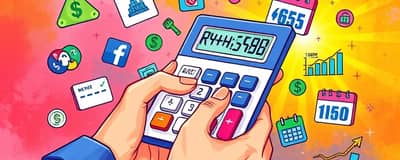Every cornerstone of our financial journey calls for informed decisions. When it comes to borrowing money, the choice between secured and unsecured loans can shape your path toward stability, growth, or even unforeseen challenges.
Imagine Sarah, a young entrepreneur, seeking capital to launch her bakery. Across town, David needs funds to consolidate credit card debt. Although both need cash, the right lending option for each differs dramatically. In this article, we demystify secured and unsecured loans, helping you illuminate the best path for your unique situation.
Understanding Secured and Unsecured Loans
A secured loan comes with a pledge: you offer collateral— a car, a home equity stake, or a certificate of deposit— as a form of guarantee. Should you default, the lender can seize that asset, recoup part or all of the outstanding balance. This trade-off, however, delivers tangible benefits like lower interest rates due to collateral and extended repayment schedules.
Unsecured loans, by contrast, stand on your credit reputation alone. Lenders rely solely on creditworthiness and promise to repay when they underwrite these products. With no asset in hand, they assume greater risk, which typically translates into higher borrowing costs and stricter approval benchmarks.
Both approaches offer compelling advantages for the right borrower. Understanding how each one operates under the hood can reveal strategies to leverage favorable terms and minimize potential pitfalls.
Weighing the Pros and Cons
Your decision ultimately hinges on a careful balance of benefits and possible drawbacks. By evaluating secured and unsecured options side by side, you can discover which path aligns most closely with your goals, risk tolerance, and credit profile.
Let’s break down the key perks and trade-offs for each loan type:
Secured Loans:
- lower interest rates due to collateral, often several percentage points below comparative unsecured options.
- Access larger sums at lower costs, making mortgages and auto financing more accessible for long-term projects.
- Flexible credit eligibility lets borrowers with lower credit scores secure financing by putting assets on the line.
- Possible tax deductions on interest for home equity loans used to improve primary residences.
- Ample time to repay, with terms that can stretch beyond a decade in some mortgage scenarios, easing monthly obligations.
Unsecured Loans:
- No risk to personal assets if payments aren’t made, preserving your home, car, or savings from automatic seizure.
- approval processes that move at lightning speed, appealing for emergency expenses or short-term cash flow needs.
- Complete freedom to apply funds to any personal or business venture without collateral restrictions.
- Straightforward applications—often online—minimizing paperwork and time spent gathering documentation.
While secured lending can be appealing, it comes with additional considerations such as collateral appraisal fees, potential legal costs, and the stress of risking high-value assets. Unsecured borrowing may seem convenient, but higher interest rates that compound over time emphasize the need for disciplined budgeting and a clear repayment plan.
Interest Rates, Loan Amounts, and Collateral Details
Interest rates represent the price of money. Secured loans typically hover below 10% APR for borrowers with solid collateral and stable incomes. Meanwhile, unsecured loans often exceed 12% APR in the current market, reflecting the higher risk to lenders.
Loan limits also diverge sharply. Secured borrowing allows for amounts up to or exceeding the asset’s appraised value. For instance, home equity lines of credit can reach six figures, while auto loans closely track vehicle valuations. Unsecured loans cap out near $100,000 in rare situations, though most personal loan seekers secure far smaller sums.
Diverse collateral options can include real estate, vehicles, savings accounts, or even collectibles. Choosing the right asset requires balancing its liquidity, value stability, and your comfort level with potential loss.
Lenders often evaluate the loan-to-value (LTV) ratio on secured loans to gauge risk. A lower LTV—meaning you borrow less relative to your asset’s worth—can unlock even lower interest rates and better terms. Improving your credit score can likewise shrink the APR on unsecured offerings, potentially bringing them within more competitive ranges.
Remember that market rates fluctuate. Shopping around and securing pre-approval quotes from multiple lenders can refine your understanding of available terms and save you significant costs over time.
Choosing the Right Loan for Your Goals
Before you apply, pause to consider the following guiding questions:
- How quickly do you need the funds? Emergency spending may favor unsecured solutions.
- Do you have high-value assets you’re willing to pledge? Collateral can unlock superior rates.
- What is your credit profile? Strong scores can level the playing field for unsecured loans.
- What is your long-term repayment capacity? Longer terms ease monthly budgets but may cost more in total interest.
- How risk-averse are you to losing an asset? This personal threshold should guide your comfort with secured options.
Take the example of Maria, who used a secured home equity line to fund a small renovation project. She benefited from lower interest rates due to collateral and paid off the balance ahead of schedule, boosting her property’s value. Conversely, Raj chose an unsecured personal loan to finance his wedding after quickly comparing offers online, valuing convenience and speed over slightly lower rates.
Your individual story will mirror elements of both. By answering these questions and weighing narratives like Maria’s and Raj’s, you can approach lenders with clarity and negotiate terms that serve you best.
Final Thoughts
Secured and unsecured loans each embody a distinct philosophy of risk and reward. Collateral-backed borrowing can unlock attractive terms but places your assets on the line. Unsecured credit offers agility and freedom, albeit at a higher cost.
By scrutinizing interest rates, collateral requirements, approval timelines, and your personal risk tolerance, you become an empowered borrower rather than a bystander in the lending process. When you pair careful planning with targeted lender research, you’ll emerge with financial solutions that accelerate your goals, whether that means purchasing a dream home, funding an ambitious project, or alleviating debt burdens.
Approach each loan conversation armed with questions, comparisons, and a clear vision for how the funds will further your aspirations. In doing so, you ensure every borrowed dollar serves as a stepping stone toward a secure, prosperous future.














